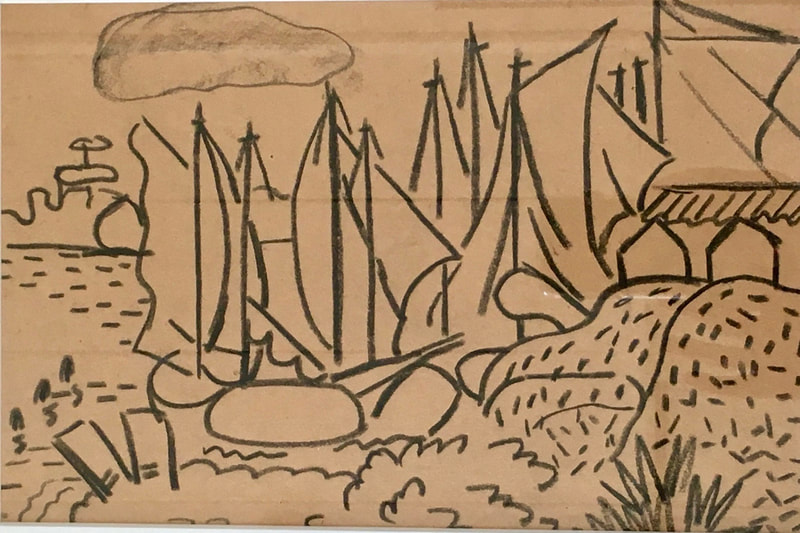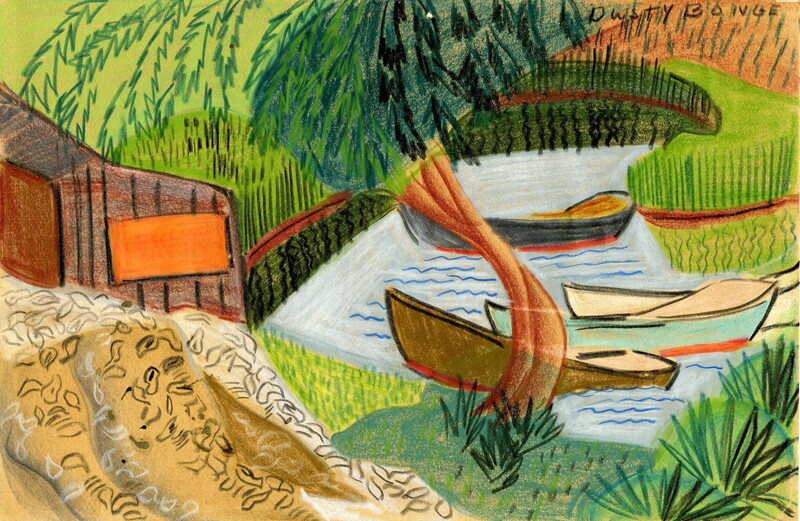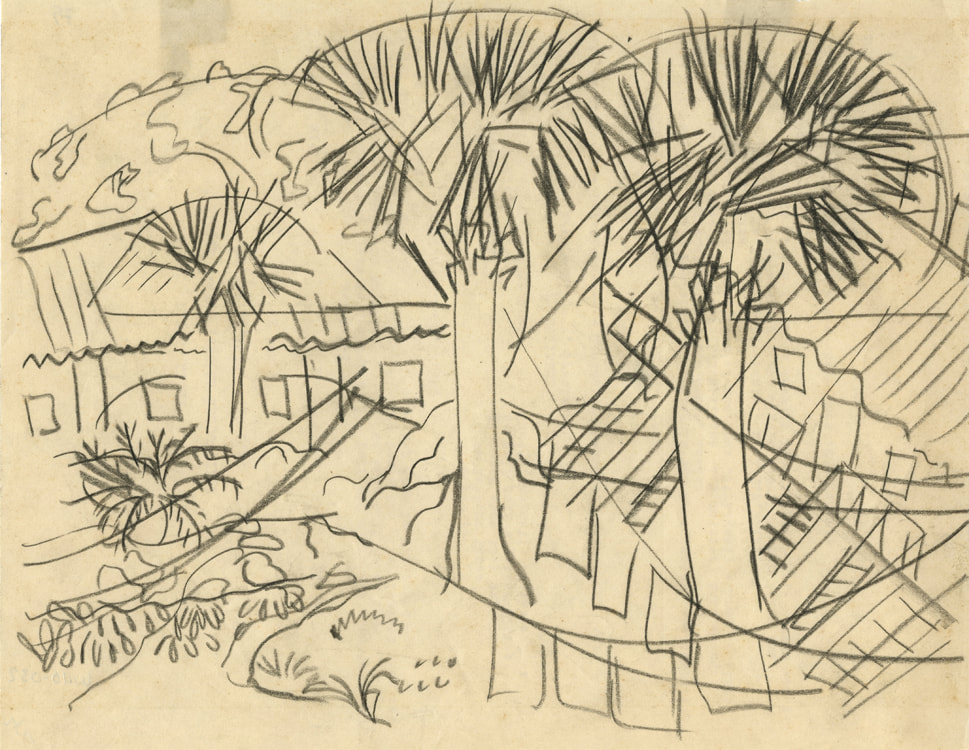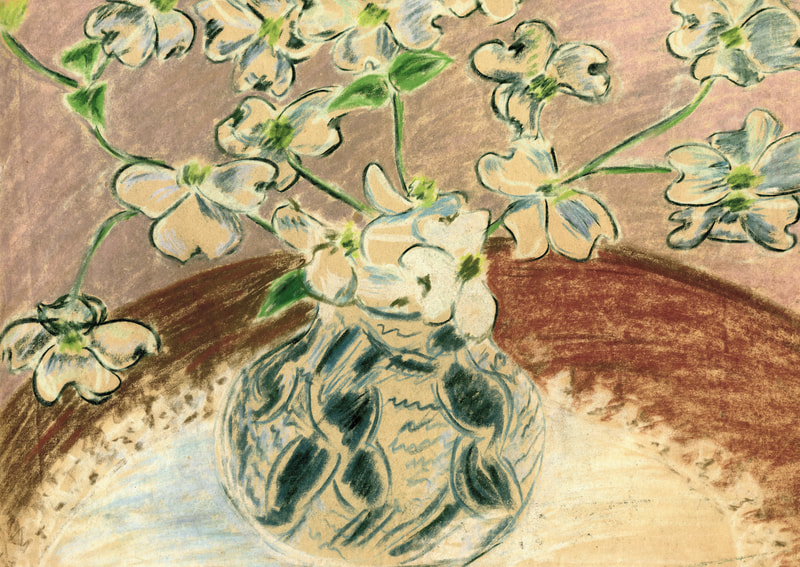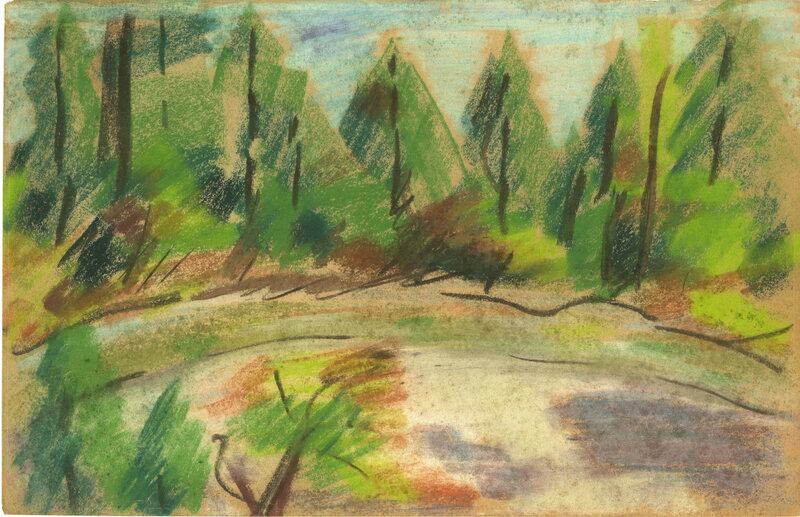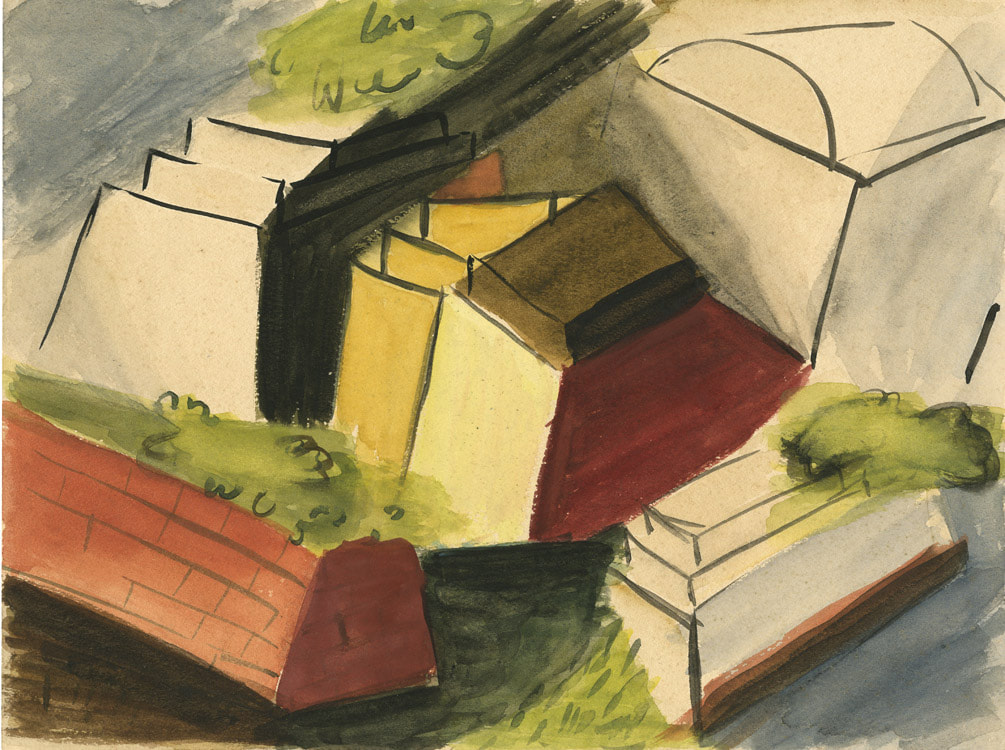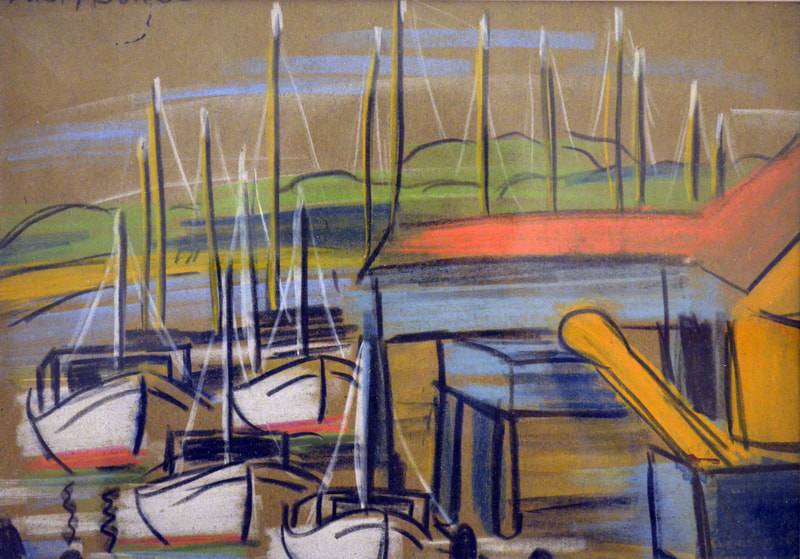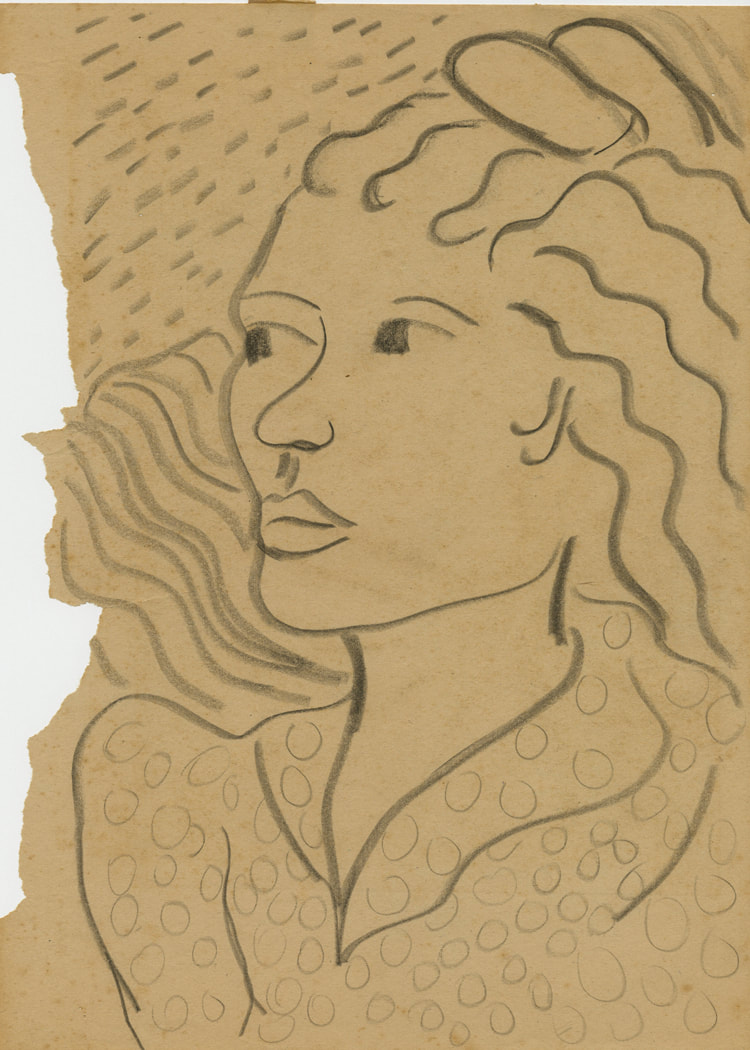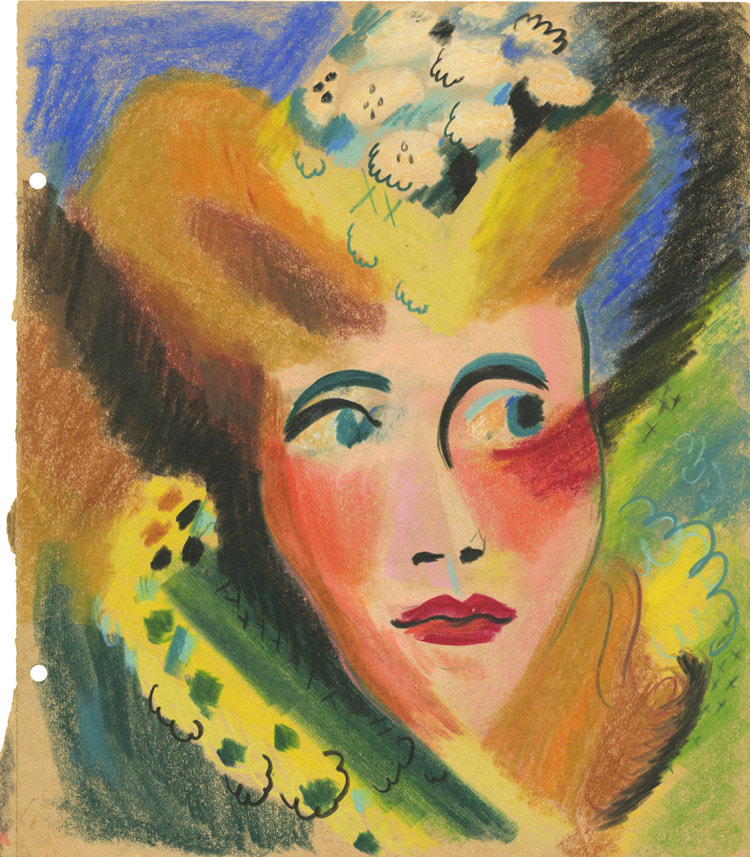|
Early Work (1936 - 1945)
In 1934 Dusti Bongé and her husband Archie Bongé settled down in Dusti’s hometown of Biloxi to raise their young son Lyle and allow Archie more time for painting. Dusti started to take an interest in painting and modern art. Archie encouraged her early artistic work and took her on excursions to paint local scenes & buildings. After Archie’s death, Dusti found solace in his studio and began painting and drawing seriously. Initially, she depicted scenes of her native Biloxi, partly inspired by Archie’s renderings of the waterfront and cityscape. These included scenes at the Back Bay of Biloxi portraying seafood factories, shrimp boats, and fishing camps, as well as certain quintessentially local scenes of serene cemeteries, ornate gazebos, colorful awnings. lighthouses, and the ever Southern “Shoefly” or "Shoofly". These were all places and buildings she saw everyday. They reflect her deep-rooted sense of place. She also worked on still life compositions of everyday objects, including seashells, fruit, vegetables, and local flowers. She was particularly fond of sunflowers, a subject matter that even recurred years later in her abstract work. And, like all great artists, she also used herself as subject matter, producing a variety of self-portraits in different media. Although these early works are representational in nature, they already exhibit her innate ability to move from a realist to a much more modernist style. She played with geometry and color, creating brightly colored Cubist-inspired, yet still objective, realist, figurative works. The focus in these works is on shapes and colors and how they are juxtaposed. They also exhibit a unique sense of spatial layering and perspective. |
|
© 2023 Dusti Bongé Art Foundation, Inc.
For personal and/or educational use only. Text and images of any works of visual art or any other images contained on this website may not be reproduced, downloaded or modified in any form without the express written permission of the Dusti Bongé Art Foundation. Nothing contained in this website shall be construed as conferring any license or right to any copyright on this website. All artwork, images, writings, and statements by Dusti Bongé are © Dusti Bongé Art Foundation, or © Paul Bongé.
|
